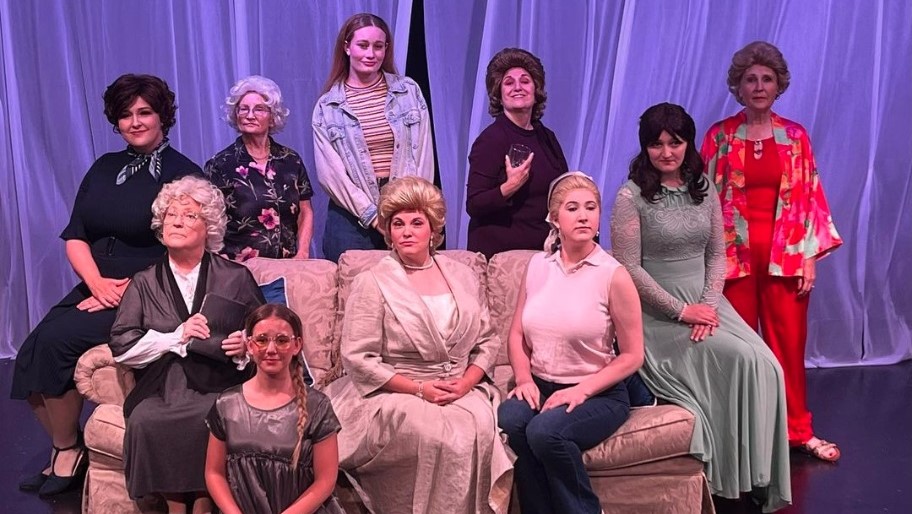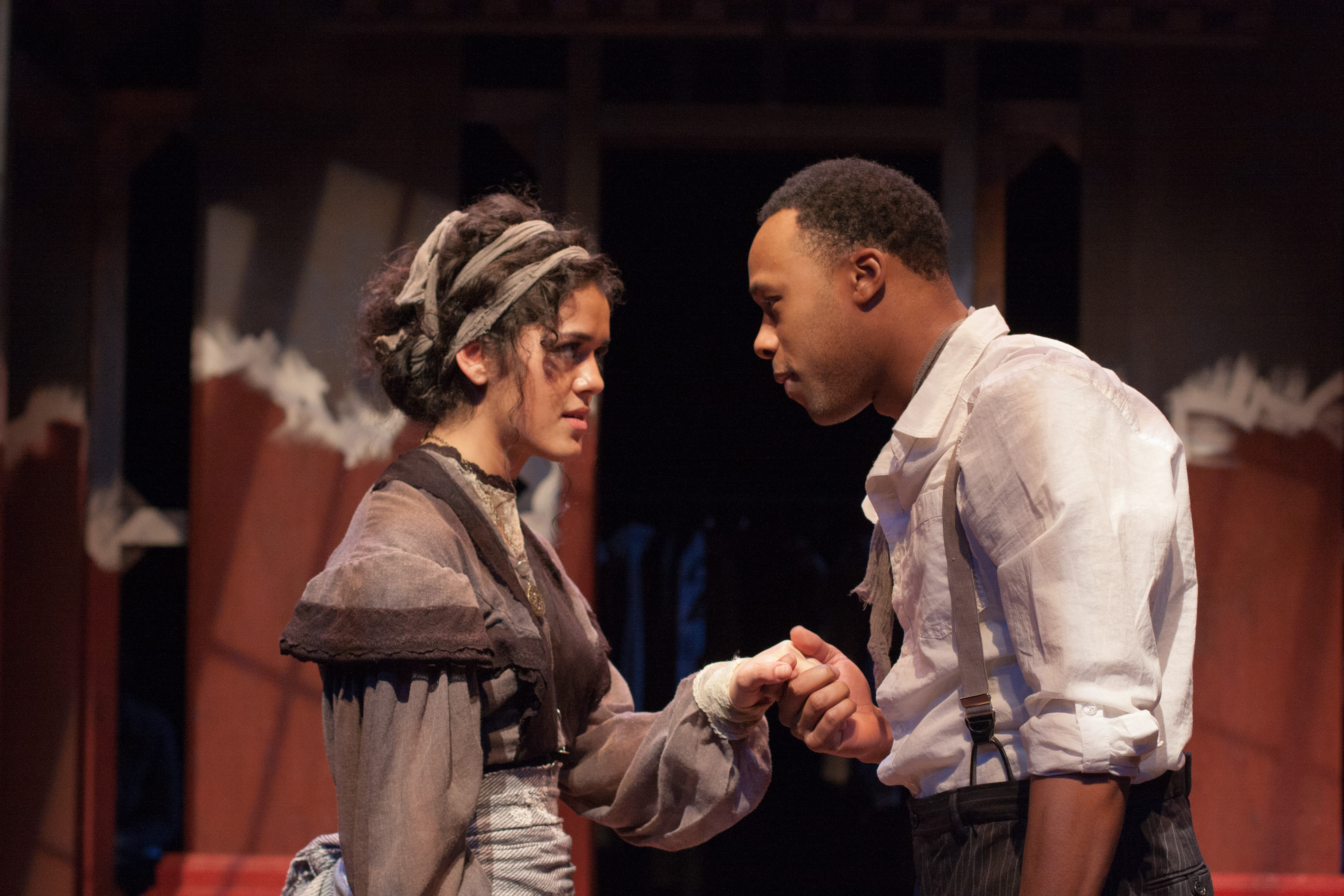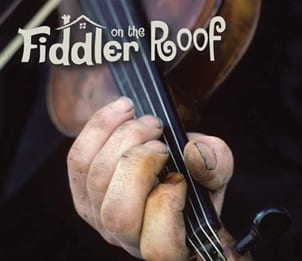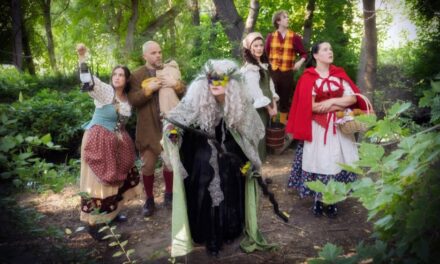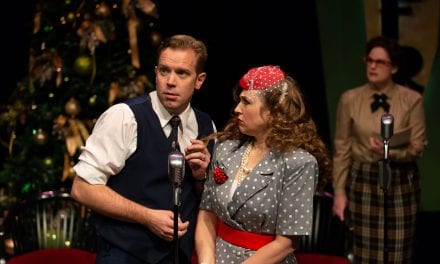PLEASANT GROVE — Michael John Lachiusa’s musical First Daughter Suite is officially described as “A Historical Fantasia in Four Parts.” However, after watching Creekside Theatre Fest’s performance at the Liahona Theatre, I can confirm that it is actually a Historical Fiction Fever Dream. With an extremely outdated script, an unmemorable score, and a seemingly nonexistent through-line, First Daughter Suite doesn’t get my vote for re-election.
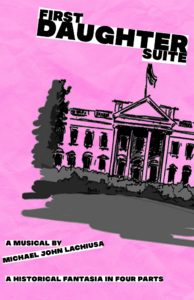
Show closes June 28, 2023.
The chamber musical first premiered Off-Broadway in 2015 and is a continuation of Lachiusa’s earlier work, First Lady Suite. It features vignettes of four different groups of women in the White House throughout the 20th century. The first vignette is set on the wedding day of Tricia Nixon, where the conflict of the Pentagon Papers scandal is pushed to the side by the ill-timed stormy weather of the garden wedding. Andrea Chapman as Patricia Nixon navigates the ghost of her mother-in-law and the fighting of her two daughters as she dazedly, yet beautifully, sings about the difficulties of believing in her husband even when he seems to be turning towards his “dark side.”
The second vignette begins with a lively dance number by Heidi Mendez Harrison as Betty Ford, who dances, sings, and drinks around her daughter Susan, a 12-year-old Amy Carter, and the new First Lady Rosalyn Carter. This vignette takes place in the dreaming mind of Amy Carter who wants to hang out with Susan because she is “the coolest girl to ever live in this house.” However, Susan makes it clear that she wants to take back her spot in the White House, and will even risk her life, (her life in the dream), to end the Iran Hostage Crisis to get it back. There are fundamental problems in the script during this quarter of the show, involving Iranian stereotypes, insinuations that Susan Ford is a terrorist and murderer, and a wild unawareness of American privilege.
When returning from the craziness of Act 1, the beginning of Act 2 feels as though the show recognizes that the audience needs a break from constant frantic energy. The third vignette is Nancy Reagan and her daughter Patti Davis by the pool, discussing their relationship. Or rather, this part of the show consists of Katie Rowley as Davis yelling a repetitive, 20-minute solo at Reagan only to be drugged by Reagan’s servant, Anita.
The final vignette depicts Jayne Luke as Barbara Bush talking with her deceased daughter as well as her living daughter-in-law. The pacing of the second act is even more inconsistent than the first, as the third vignette of the show only has 2 songs, and this final vignette has 7. Barbara sings song after song about how she is disappointed in everyone else for not being as good as her.
If it seems unclear as to why these particular women and stories were chosen, that’s because it is. The script is uninspired, thoughtless, and trite. Instead of researching the real-life accounts of these women, LaChiusa speculates about their interactions. He focuses the story on their undying loyalty to their husbands and fathers instead of their service to their country.
With that being said, there are more problems with this production than the script. The direction, by Jayne Luke, is surface-level and limits any depth of character or growth to come forth. The standout is Addie Wray Scott as Julie Nixon who steals the show in the very first vignette with her comedic timing and understanding of the script. She makes the best of the reductive dialogue and sings with remarkable tone and pitch. While the vocal performances of the cast were mostly positive, I felt as though I never had a chance to catch my breath. Each actress belts her way through the show with little to no variation in tone, volume, or delivery.
The blocking is mostly repetitive and uninteresting, as the potential of the black box set isn’t realized by Luke or the set designer, Brian Hadfield. The lighting design by Zac Bringhurst was also a disappointment. For the first thirty minutes, the audience is flushed with bright lighting that matches the stage. I was surprised to learn that this choice was intentional and not a constraint of the venue, as the next vignette had a different lighting cue that was much more dynamic and related to the plot. Unfortunately, the cues would vary often in quality and connection to the action of the play.
The lack of a costume designer shows in this decade-spanning production, as the cast dresses themselves in sometimes unintentionally anachronistic attire. On a similar note, the wigs were all large and noticeable. However, they fit the superficial qualities of the characters, so it does fit in a way. It was impressive to have such a wide range of ages for the actresses in the musical, a bonus for making the characters come to life easier.
Overall, the design of the production did not do much to help the poor script choice. The actresses could have used more clear direction and studying of the script, but again, the whole show was set back by the choice to do this script in the first place. All these reasons are why, unlike the First Daughters in this musical, I will not be choosing to re-elect this musical and watch it ever again.

